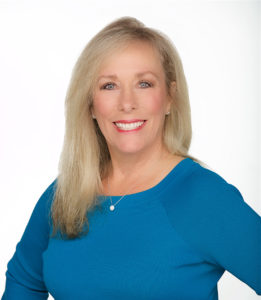SHAPING UP YOUR RETIREMENT PLAN!
Steps women can & should take NOW more than ever to be in control of and OWN their financial lives.
This virtual event, hosted by partner and Sr. Wealth Advisor, Elisabeth Cullington, featured Managing Director, Chief Retirement Strategist, and Head of Individual Retirement, at J.P. Morgan Funds, Katherine Roy. Katherine is a wealth of knowledge in the retirement and wealth management planning world, who understands that while women have made strides in planning for retirement, they still face many challenges including: living longer, rising healthcare costs, and competing priorities. In this interactive and casual discussion, Katherine and Elisabeth offered insight into key financial data points that will help guide women with retirement planning, while outlining steps women can take towards building a plan and saving with confidence.
Some key highlights of their discussion are included below and the full slide deck can be downloaded by clicking here.
FOCUSING ON WHAT YOU CAN CONTROL
Look at the total retirement equation and make the most of the things you can control, such as: saving vs. spending, asset allocation, diversification of investments/investment vehicles, and staying invested during market lows, while evaluating factors that are somewhat or completely out of your control, within your comprehensive plan.
Risk tolerance and confidence play key roles in life planning for women. Research has shown women to be less risk tolerant and they also tend to have lower confidence in investing and financial decision making. Becoming educated and developing a partnership with a trusted advisor can help women better understand their options and develop attainable plans, which ultimately leads to higher confidence surrounding financial decisions.
CHANGES IN LIFESTYLE
Retirement offers the gift of time to do the things that matter most to you. While our happiest years may be in retirement, the transition isn’t always a walk on the beach. Knowing what activities and social connections are fulfilling prior to retiring can ease the stress often associated with this new life stage. Katherine suggests “Practicing Retirement” or, in other words, trying lots of new things in the years leading up to retirement to see what fits and what doesn’t.
SOCIAL SECURITY – TIMING TRADE-OFFS, MAXIMIZING BENEFITS, AND SPOUSAL/SURVIVOR BENEFITS
Deciding when to claim benefits will have a permanent impact on your lifetime benefits. While applying for benefits before FRA (full retirement age) reduces your total benefit (percentage of reduction dependent on birth year), the inverse is true of waiting to collect past FRA; with a universal 8% increase each year you defer, up to age 70. Although an automatic 8% increase does seem enticing, it is prudent to understand how Social Security timing strategies align with your financial position and overall plan. Waiting to collect could put unnecessary strain on your portfolio, which may be used to bridge the gap and provide income until delayed benefits are received. Another key consideration is life expectancy- what age must you live to, to have made delaying the benefit worth it (i.e. the breakeven point)?
Other factors that could impact you are spousal and widower benefits. These benefits are a bit more nuanced and should be discussed with a professional to help determine your best options. For more information on your benefits, we encourage you to visit ssa.gov, yearly if possible, to review your reported wages for accuracy and determine your projected benefits.
HEALTH CARE COSTS
Health care costs can have a great impact on retirement planning, especially for those who aim to retire before reaching Medicare age (65). Whether you are paying increased costs of COBRA or have to find a Marketplace plan, these extra costs need to be considered. For Marketplace plan estimates check out this link, Health Insurance Marketplace Calculator.
Unfortunately, once you reach Medicare age your pocketbook does not get as big of a break as one might think. Studies suggest that it may be prudent to assume 6% for annual health care inflation rates. On top of this, the Medicare surcharge (additional premium owed, based on income thresholds) is determined by your modified adjusted gross income two years prior. Due to the fact that the Medicare surcharge thresholds for singles/surviving spouses are half of that of couples, these individuals are likely to be more affected.
TAX IMPLICATIONS FOR RETIREMENT SAVINGS
It is important to consider the tax advantages and disadvantages of different savings vehicles, such as Roth IRAs/401(k)s, Traditional IRAs/Tax 401(k)s and HSA. Depending upon your life stage/income/tax bracket, each play important roles in planning for your future. Managing taxes over a lifetime requires a balance of current and future tax pictures. Making income tax diversification a priority can allow you to have more flexibility and control in retirement. According to Katherine’s illustration, it is ideal to contribute to a Roth early in your career and shift to other vehicles as your income increases.
- Roth 401(k) contributions in peak earning years if wealth is concentrated in tax-deferred accounts.
- Proactive Roth conversions in lower income retirement years if RMDs are likely to push you into a higher bracket.
When it comes to maximizing savings for future healthcare expenses, a Health Savings Account (HSA) is the way to go. If you are enrolled in a qualified high-deductible health plan and are eligible to contribute to a HSA, be sure to open and fund your HSA. Investing your HSA contributions for the long term and paying for current health care expenses out of income or short-term savings can provide significant tax-free funds for health care expenses in retirement.
LONG TERM CARE PLANNING
Consider the range of possible needs, solutions, and START PLANNING EARLY! There is a high likelihood of needing care which often starts at home before progressing to other settings. So, considerations such as whether you will want to move closer to family, affordability of insurance, HSA and other savings, and how socially connected you will want to be are all important. Several solutions and ideas were touched upon and most people will need to use more than one:
- FAMILY & FRIENDS – May provide some assistance or help coordinate care.
- SAVINGS – May fund paid care and some other expenses such as travel, and entertainment may go down.
- INSURANCE – Options include traditional LTC insurance, combination life and annuity products, life insurance for a surviving spouse, and deferred annuities for income later in life.
- CONTINUING CARE RETIREMENT COMMUNITIES – Known as CCRCs, these are communities where people start living on their own and as care needs develop additional services or facilities are provided (costs and services vary).
- HOME EQUITY – Second homes may be sold; the home equity in your primary residence may be used if your other options are limited; credit availability and home values may fluctuate
SUMMARY
Now is the time to prioritize and work on what you can control: saving more, choosing how to invest your savings and the appropriate vehicle relative to your situation, verifying and educating yourself on Social Security benefits, incorporating health care costs into your financial plan, taking advantage of HSA contributions (if applicable), and investigating long term care options. Some good beginning steps might be to start with simple mental accounting: budgeted funds, emergency funds, discretionary spending, and investable assets. Review your accounts and make sure they are working for you and your goals, and that they are allocated/diversified in a manner that is congruent with your overall financial plan; allocation is something that should be checked frequently and especially after major life changes.
Next steps? Enjoy practicing your retirement! By owning your financial life NOW, you are creating better opportunities to live the life you want in the FUTURE.
Your Hosts:
 Elisabeth Cullington is a Partner at HoyleCohen and co-founder of the firm’s Women’s Practice. Elisabeth has been providing complex financial advice to professionals, business owners, and women for more than three decades. As a Certified Divorce Financial Analyst, she also specializes in helping women in transition (resulting from divorce, widowhood, and career advancement). Elisabeth is passionate about helping people define their goals and make confident financial decisions.
Elisabeth Cullington is a Partner at HoyleCohen and co-founder of the firm’s Women’s Practice. Elisabeth has been providing complex financial advice to professionals, business owners, and women for more than three decades. As a Certified Divorce Financial Analyst, she also specializes in helping women in transition (resulting from divorce, widowhood, and career advancement). Elisabeth is passionate about helping people define their goals and make confident financial decisions.
 Katherine Roy, Managing Director, is Chief Retirement Strategist and Head of Individual Retirement for J.P. Morgan Asset Management. In this role, Katherine is responsible for delivering timely personal retirement-related insights to financial advisors. Focused on the retirement income-related landscape for more than 15 years, Katherine specializes in identifying themes, strategies and solutions that can help advisors successfully partner with individuals in the transition and distribution life stages. Katherine is consistently ranked as a top speaker at major industry and firm-specific conferences and events.
Katherine Roy, Managing Director, is Chief Retirement Strategist and Head of Individual Retirement for J.P. Morgan Asset Management. In this role, Katherine is responsible for delivering timely personal retirement-related insights to financial advisors. Focused on the retirement income-related landscape for more than 15 years, Katherine specializes in identifying themes, strategies and solutions that can help advisors successfully partner with individuals in the transition and distribution life stages. Katherine is consistently ranked as a top speaker at major industry and firm-specific conferences and events.

